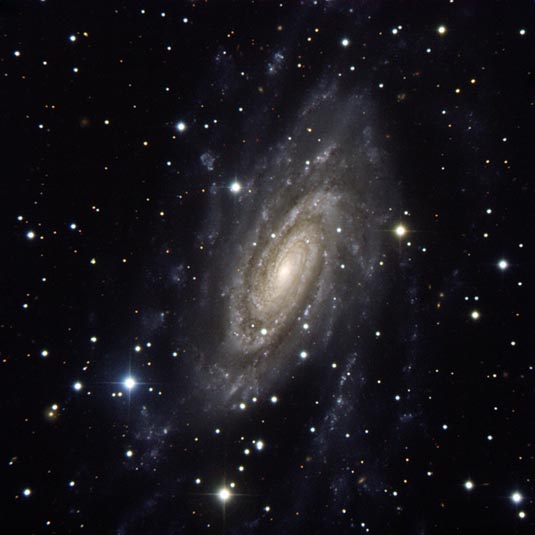
Spiral Galaxy
RA 6hr 44m 49.40s Dec -27° 38' 21.72"
Canis Major
75 million light years
10.4
6.3x 3.1 arc-min
5.22 x 5.23 arcminutes
North is 1.2° right of vertical
ESO
December 3, 2009
ABOUT THIS IMAGE:
This new image of the galaxy NGC 2280 shows the extent of its massive spiral arms that reach far into the surrounding space. These star-filled tentacles taper off into wispy blue clouds of illuminated and glowing gas well away from the central, bright bulge of the galaxy. Found towards the constellation of Canis Major (the Greater Dog), NGC 2280 is thought to be similar in shape to our own Milky Way galaxy.
NGC 2280 whirls in the cosmos about 75 million light-years from us; this snapshot therefore shows the galaxy as it appeared when dinosaurs still roamed the Earth. The galaxy was first discovered by John Herschel on February 1, 1837.
The very bright stars that sparkle like diamonds in the image, as well as the many other stars of various colors, are all in the foreground of our view, as they lie much closer to us than NGC 2280.
The
image was captured with the ESO Faint Object Spectrograph and Camera (EFOSC2)
through three filters (B, V, R). EFOSC2 was attached to the 3.6-meter
telescope at ESO's La Silla Observatory in Chile. EFOSC2 has a field of
view of 4.1 x 4.1 arcminutes